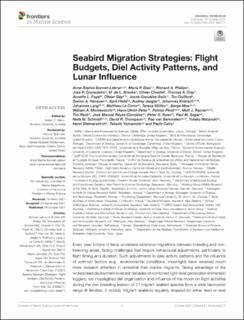| dc.contributor.author | Bonnet-Lebrun, Anne-Sophie | |
| dc.contributor.author | Dias, Maria P. | |
| dc.contributor.author | Phillips, Richard A. | |
| dc.contributor.author | Granadeiro, José P. | |
| dc.contributor.author | de L. Brooke, M. | |
| dc.contributor.author | Chastel, Olivier | |
| dc.contributor.author | Clay, Thomas A. | |
| dc.contributor.author | Fayet, Annette L. | |
| dc.contributor.author | Gilg, Olivier | |
| dc.contributor.author | González-Solís, Jacob | |
| dc.contributor.author | Guilford, Tim | |
| dc.contributor.author | Hanssen, Sveinn Are | |
| dc.contributor.author | Hedd, April | |
| dc.contributor.author | Jaeger, Audrey | |
| dc.contributor.author | Krietsch, Johannes | |
| dc.contributor.author | Lang, Johannes | |
| dc.contributor.author | Le Corre, Matthieu | |
| dc.contributor.author | Militao, Teresa | |
| dc.contributor.author | Moe, Børge | |
| dc.contributor.author | Montevecchi, William A. | |
| dc.contributor.author | Peter, Hans-Ulrich | |
| dc.contributor.author | Pinet, Patrick | |
| dc.contributor.author | Rayner, Matt J. | |
| dc.contributor.author | Reid, Tim | |
| dc.contributor.author | Reyes-González, José Manuel | |
| dc.contributor.author | Ryan, Peter G. | |
| dc.contributor.author | Sagar, Paul M. | |
| dc.contributor.author | Schmidt, Niels M. | |
| dc.contributor.author | Thompson, David R. | |
| dc.contributor.author | van Bemmelen, Rob | |
| dc.contributor.author | Watanuki, Yutaka | |
| dc.contributor.author | Weimerskirch, Henri | |
| dc.contributor.author | Yamamoto, Takashi | |
| dc.contributor.author | Catry, Paulo | |
| dc.date.accessioned | 2021-11-11T08:40:54Z | |
| dc.date.available | 2021-11-11T08:40:54Z | |
| dc.date.created | 2021-11-10T10:12:39Z | |
| dc.date.issued | 2021 | |
| dc.identifier.issn | 2296-7745 | |
| dc.identifier.uri | https://hdl.handle.net/11250/2829008 | |
| dc.description.abstract | Every year, billions of birds undertake extensive migrations between breeding and non-breeding areas, facing challenges that require behavioural adjustments, particularly to flight timing and duration. Such adjustments in daily activity patterns and the influence of extrinsic factors (e.g., environmental conditions, moonlight) have received much more research attention in terrestrial than marine migrants. Taking advantage of the widespread deployment in recent decades of combined light-level geolocator-immersion loggers, we investigated diel organisation and influence of the moon on flight activities during the non-breeding season of 21 migrant seabird species from a wide taxonomic range (6 families, 3 orders). Migrant seabirds regularly stopped (to either feed or rest) during migration, unlike some terrestrial and wetland birds which fly non-stop. We found an overall increase for most seabird species in time in flight and, for several species, also in flight bout duration, during migration compared to when resident at the non-breeding grounds. Additionally, several nocturnal species spent more of the day in flight during migration than at non-breeding areas, and vice versa for diurnal species. Nocturnal time in flight tended to increase during full moon, both during migration and at the non-breeding grounds, depending on species. Our study provides an extensive overview of activity patterns of migrant seabirds, paving the way for further research on the underlying mechanisms and drivers. | en_US |
| dc.language.iso | eng | en_US |
| dc.publisher | Frontiers | en_US |
| dc.rights | Navngivelse 4.0 Internasjonal | * |
| dc.rights.uri | http://creativecommons.org/licenses/by/4.0/deed.no | * |
| dc.title | Seabird Migration Strategies: Flight Budgets, Diel Activity Patterns, and Lunar Influence | en_US |
| dc.type | Peer reviewed | en_US |
| dc.type | Journal article | en_US |
| dc.description.version | publishedVersion | en_US |
| dc.source.journal | Frontiers in Marine Science | en_US |
| dc.identifier.doi | 10.3389/fmars.2021.683071 | |
| dc.identifier.cristin | 1953063 | |
| cristin.ispublished | true | |
| cristin.fulltext | original | |
| cristin.qualitycode | 1 | |

